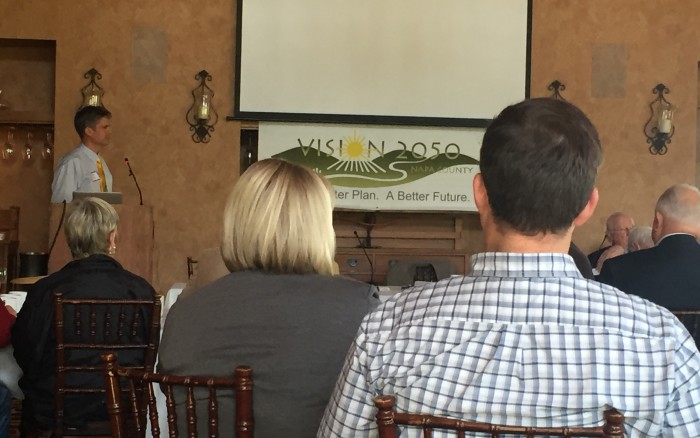Ag or Business Community?
The following is a Letter to the Editor of the Napa Register posted this last week about the sold-out April 1, 2016, Forum on a Tourist Economy. What is interesting to me are the negative comments (comment section of online newspaper) that come when you question capitalistic agendas. It is time that we all question these assumptions in ourselves and in the decisions that our governing officials are making at every level of our government.
One of the biggest take aways in the recent Napa Valley Vision 2050 Economic Forum was a statement from Boston University professor and researcher Samuel Mendlinger. “We need to face the reality that Napa Valley is no longer an agricultural community,” he said, “but a business community. Only then can we ask the right questions.”
My husband and I are farmers—growers, as they say now— both from Midwestern farming families. I love the rhythms of farming, the culture and the intimate relationship with the earth, and I will continue to. The truth of this statement about our valley is not something I have wanted to accept— and yet it’s been hanging there, just off in the wings.
Privately, I discussed this more with Mendlinger, and with more specificity. We delineated some of the differences in these two approaches and the frictions that develop, frictions which only cause more polarization. For instance, in an Ag community there often are spoken and often unrecorded agreements between neighbors (easements, agreements on water usage, etc.) which are held to in good faith. When land becomes economically interesting, and those wealthy enough purchase land that has been handled in these older ways, trouble ensues. Often these people’s wealth comes from business, seldom agriculture. Neighbor agreements no longer work because it isn’t on the newcomer’s radar, and too often, concern. There are simply different rules in business.
In the Napa Valley I have watched newcomers move in from out-of-county or state, and not consider that spoken agreements might exist. Even when easements have been recorded on titles, the county does not consider them in the permitting process. Consequently neighbors are forced into battles with each other, fighting it out in the Planning Commission, appeals to the Board of Supervisors, and in our courts. Yes, it causes friction! —in part because we are operating in different paradigms: the “old” ways of agriculture and and the “new” ways of business. Could we find a happier medium?
And this is just one of the several challenges of outsiders moving in, viewing land as a business venture versus an agricultural contract with the land. Napa Valley is fighting the wrong fight in not recognizing this shift. Polarization only gets worse and any real problem solving, impossible.
If we can accept this shift, though, then maybe we can start formulating the right questions, which address not so much preserving agriculture, as protecting— and improving— the environment and the serious challenges we are facing with climate change and wine industry successes– to our watersheds, water, the social fabric, housing, traffic patterns.
This does not mean ignoring our Ag Preserve and Ag Watershed lands. It means recognizing, like it or not, the 2010 revisions to the WDO (Winery Definition Ordinance) have made these Ag zoned lands venues for intensified business activities. How do we address this so business interests do not eclipse environmental, social, and fiscal considerations?
This too was a strong message in the Forum Friday: the importance of strong citizen groups in communication with our governing officials, and governing officials who listen. I applaud our county officials for the public hearings and times of public comment, for their willingness to engage with the public. I applaud the forums where all sides have a voice. It is important that these officials make decisions with a broader perspective gained by this discourse. This could just be a process whereby we find workable solutions that address the environment in all its dimensions: watersheds and water, economic health, and tourism in balance with a healthy community.
